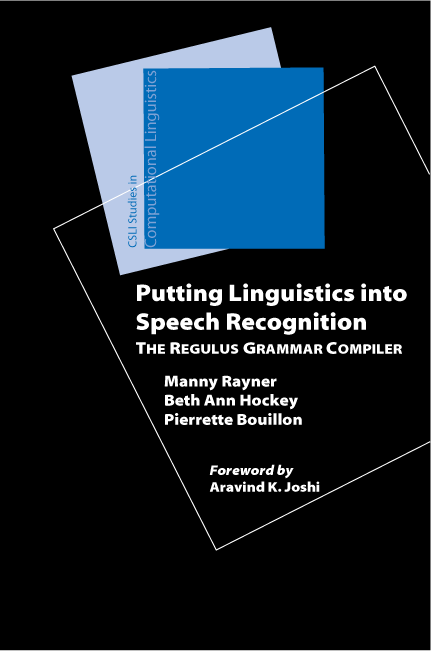

|
|
|
|

Putting Linguistics into Speech RecognitionHigh-performance spoken dialogue interfaces typically use a spoken command grammar, which defines what the user can say when talking to the system. For complex applications, implementation and maintenance of this grammar is a major task requiring specialized expertise in computational linguistics and software engineering. The resulting grammars are difficult to maintain, and do not port easily to new domains. Regulus is an Open Source toolkit for construction of spoken command grammars, which has been developed since 2001 by a consortium whose main partners have been NASA Ames, the University of Geneva, and Fluency Voice Technology. Grammar development with Regulus is carried out using example-based methods and reusable grammar resources, which reduces the level of expertise needed and makes the process more automated. The Regulus approach is effective for building command grammars even at initial stages of a project when there may be little or no domain data available. Regulus has been used to build command grammars for several major projects. Among these are NASA's Clarissa, which in 2005 became the first spoken dialogue system to be deployed in space, and MedSLT, an Open Source medical speech translator developed at Geneva University. This book presents a complete description of both the practical and theoretical aspects of Regulus, including several example applications which can be downloaded from the companion website. is a research scientist at NASA Ames Research Center, California, and Geneva University, Switzerland. is a research scientist at Ames Research Center. is project lead on MedSLT medical spoken language translation project translation project at Geneva University. Contents
I Using Regulus 23 II How Regulus Works 175 4/1/2006 ISBN (Paperback): 1575865262 (9781575865263)
|
Distributed by the
University of Chicago Press |
|
pubs @ csli.stanford.edu
|
CSLI Publications
Stanford University Cordura Hall 210 Panama Street Stanford, CA 94305-4101 (650) 723-1839 |